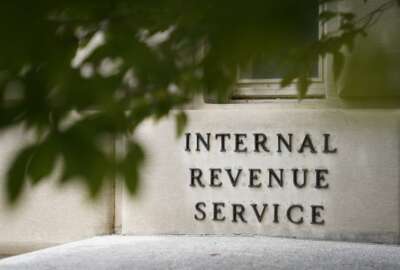BLS: Public sector union membership 5 times higher than private sector
In 2011, more than 28 percent of federal employees were union members. That\'s in contrast to less than 7 percent of unionized employees in the private sector.
In 2011, more than 28 percent of federal employees were union members. That’s in contrast to less than 7 percent of unionized employees in the private sector.
The numbers come from a Bureau of Labor Statistics analysis.
The number of federal union members increased slightly from the previous year, from 26.8 percent in 2010 to 28.1 percent in 2011. Out of 3.57 million federal employees, more than 1 million were unionized in 2011, according to the BLS findings.
The number of federal employees covered under a union contract are even higher — about one-third. This number accounts for the workers who reported no union affiliation but whose jobs are covered by a union or an employee contract.
BLS found the public sector overall, including local and state employees, is 37 percent unionized — five times higher than the private sector rate.
“I think the better environment for unionization in the public sector is demonstrated by the actual numbers,” said Bill Fletcher, Jr., director of field services and education for the American Federation of Government Employees, in a phone interview with Federal News Radio.
Fletcher said the numbers should not indicate that private sector employees don’t want to organize. Rather, the “continuous organizing plus the lower level of resistance one gets in the federal sector to unionizing” contributed to the higher union rates in government, Fletcher said.
However, James Sherk, a policy analyst in labor economics with the Heritage Foundation, writes that union membership overall is falling because “traditional collective bargaining does not appeal to most workers.”
“Why are so few private-sector workers union members? Because most workers do not want to unionize. Polling shows that only 9 percent of non-union employees want to join a union, while 81 percent do not,” Sherk wrote, citing a 2009 Rasmussen Reports poll.
Sherk pointed out the government does not face the same kind of “economic forces” the private sector must deal with. Government agencies “don’t go into business and go bankrupt,” he said in an interview with Federal News Radio.
Sherk said the high union involvement in federal government includes the Postal Service, which is two-thirds unionized.
Another reason for higher union rates in the government is due to the “open shop.” AFGE has 260,000 dues-paying members but actually represents 600,000 workers.
“So a worker can have a grievance or some other issue, not be a member but nevertheless, we have to represent them,” Fletcher said.
Federal employees are allowed “official time,” meaning they can perform union-related work while the government is paying their salary.
But one lawmaker has argued that official time should not be granted to feds. Last year, Rep. Dennis Ross (R-Fla.) co-sponsored a bill to limit when official time could be used by federal employees. Ross is also chairman of the House Oversight and Government Reform’s subcommittee on federal workforce issues.
“There is no evidence that official time has a positive impact on productivity,” Ross said in a hearing in July 2011. “When an employee is on official time, he or she is not available to perform the duties for which they were hired. I ask, can we afford such charity given the fiscal problems facing our country?”
Bill sponsor Rep. Phil Gingrey’s (R-Ga.) said official time had been “mismanaged and abused” by federal employees.
With proposals such as the Ross bill, Fletcher said what was surprising about the BLS numbers for 2011 was that federal union numbers had not declined from the previous year.
“What that means is unions are fighting back,” Fletcher said.
The BLS report comes on the heels of the 50th anniversary of federal employees’ right to unionize. In 1962, President John F. Kennedy signed executive order 10988, which stated, “[T]he well-being of employees and efficient administration of the government are benefited by providing employees an opportunity to participate in the formulation and implementation of personnel policies and practices affecting the conditions of their employment.”
In remarks this month, Office of Personnel Management Director John Berry said, “[W]hen federal unions and management work together, great things happen. Money is saved. Work conditions get healthier. People work smarter, and get the tools they need to succeed. Taxpayers get better service, at lower cost — because we work together.”
RELATED STORIES
Fed membership in unions declines slightly
Lawmakers at odds over ‘official time’
Bureau of Labor Statistics responds to federal pay in the media
Copyright © 2025 Federal News Network. All rights reserved. This website is not intended for users located within the European Economic Area.





